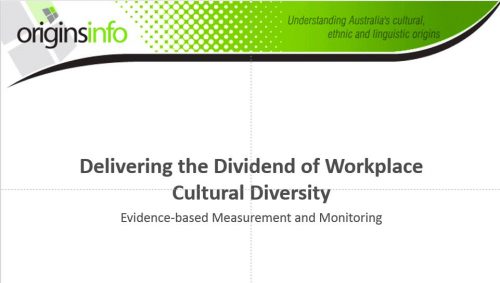To be relevant and attractive to customers, an employee profile should closely reflect the cultural diversity of the communities the business serves. And, in larger organisations, this diversity should be apparent across different roles and different levels of seniority.
Creating a More Culturally-Diverse Workplace
Large organisations today regularly have titles such as ‘Director of Diversity and Inclusion’ among their senior executive roles.
They are tasked with the responsibility to deliver a diverse workforce that is
- Representative of the community served
- Constructively engaged, and
- Recognised and valued.
One dimension of workplace diversity is cultural diversity. Until now, collection of cultural data has presented logistical difficulties. This is because there are many definitions and dimensions of culture. And the collection process is often clumsy and intrusive.
Self-ascribed options collected on surveys or forms (including at the point of recruitment), are often transient and present difficulties in collating and processing results. Creating and administering a non-intrusive, high-response, consistent and cost-effective survey is resource and time-intensive. And, as any market researcher will attest, benchmarking survey responses with census data is not a valid like-for-like comparison, even for the narrow cultural attribute of ‘Country of Birth’.
But evidence suggests culturally-diverse businesses are more innovative, more productive and more successful. So, it cannot be ignored. Oft-quoted research by Cedric Herring in the American Sociological Review, highlights the contribution that ‘racial’ diversity plays as a predictor of sales, customers, market share and profitability.
Drawing on data from a robust sample of 506 companies that provided information on the racial composition of its workforce, he demonstrated that a one unit increase in the level of racial diversity, accounted for an 8.7% increase in sales. Read the full article here or see a summary here.
Given its importance, organisations need a robust and efficient way to measure cultural diversity. Origins is a robust reliable and cost-effective solution, enabling you to establish benchmarks across the organisation – including drilling down into dimensions such as role, tenure, location and seniority. In the UK, Origins is being deployed to measure differences in pay rates by cultural group. This has become necessary in the light of imminent legislation requiring large employers to report on this. Down the track, you will see how your business is tracking towards a more diverse future, better equipped to reflect and engage with the market it serves.
